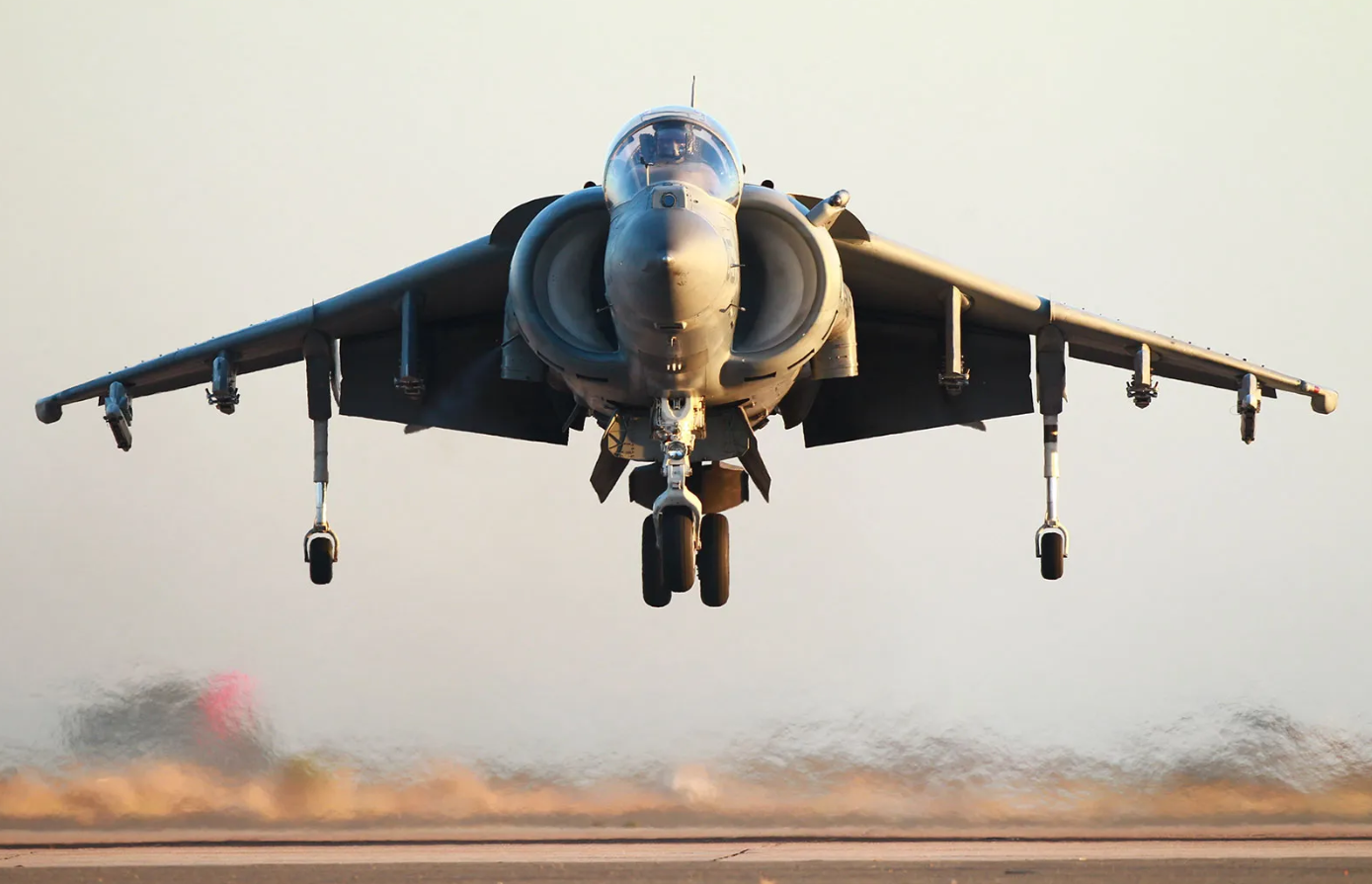
Fighter planes have always been the paragons of aerial warfare—quick, powerful, and usually years beyond their time in technology. They’re the planes that set eras and compel whole armies to recast their tactics. Which fighters, though, really altered the face of air combat? Here’s a list of ten planes that made a lasting impact on military history, each standing on its own through innovation, combat record, and success in shaping aircraft designs that followed.

10. Harrier (Great Britain, Cold War & Falklands War)
The Harrier wasn’t any ordinary jet—it could take off vertically. Through its VTOL (Vertical Take-Off and Landing) capability, it could take off and land from smaller ships and makeshift airstrips, providing commanders with possibilities they never had previously. In the Falklands War, Harriers demonstrated their value in exercising air superiority even when outnumbered, where it was demonstrated that mobility and flexibility could be just as good an asset as sheer speed.

9. F-22 Raptor (USA, Modern Era)
Designed to achieve complete air superiority, the F-22 combines stealth, speed, and advanced sensors in a manner unmatched by any other fighter. Able to attack before the enemy even realizes it exists, it redefined what “first look, first shot, first kill” actually means. Although manufactured in small quantities, it has had an impact on the design and aspirations of every current fighter since.

8. Me 262 (Germany, World War II)
The Me 262 was the first production jet fighter, and it represented a preview of coming attractions in air warfare. Its firepower and speed threatened Allied piston-powered fighters, and it compelled new tactics towards the end of World War II. Though too late to alter the war’s outcome, its technology influenced the postwar jet age in both the West and the East.

7. F-15 Eagle (USA, Cold War and Present)
With a record air-to-air combat success—more than 100 victories and not one confirmed loss—the F-15 established the gold standard for air superiority fighters. Blending speed, maneuverability, range, and heavy armament, it served as the staple of U.S. air dominance for decades. Ongoing upgrades have kept it going strong well into the 21st century.

6. Su-27 Flanker (Soviet Union/Russia, Cold War and After)
The Su-27 was built to match the F-15, and it managed to produce a lasting competitor. With phenomenal agility, range, and heavy armament, it shaped air combat around the world. Its numerous variants, such as the Su-30 and Su-35, are at the heart of various air forces today.

5. F-16 Fighting Falcon (USA, Late Cold War and Beyond)
Originally designed as a light dogfighter, the F-16 soon developed into an all-around multirole fighter. Its fly-by-wire flight, complete visibility, and low operating expense made it a favorite globally. With the capability to fight in the air, strike on the ground, and perform specialty missions, it’s still among the most employed fighters in service decades after its introduction.

4. F-86 Sabre (USA, Korean War)
The F-86 placed swept-wing jet design in the limelight in the Korean War, where it fought the MiG-15 in some of the first jet-versus-jet combat. What the Sabre learned and how it employed its tactics influenced the future of air combat doctrine, and it stands as a transitional fighter between propeller warbirds and postmodern jets.

3. MiG-21 (Soviet Union, Cold War)
The MiG-21 is the most widely manufactured supersonic fighter of all time, and it has flown with dozens of countries. Simple, fast, and tough, it was a mainstay of Cold War air forces and saw action in many hotspots around the globe. Even now, upgraded models are still in service, a testament to the timelessness of its design.

2. F-4 Phantom II (USA, Cold War)
Few aircraft have been used in as many capacities, by as many air forces, for as long as the F-4 Phantom II. Quick, well-armed, and versatile, it was used as an interceptor, bomber, reconnaissance aircraft, and even as a Wild Weasel to destroy enemy defenses. Throughout Vietnam, through the Gulf War, and in the employ of many allied nations, the Phantom demonstrated its worth again and again. Several nations have upgraded their Phantoms to continue flying them into the 21st century, highlighting their incredible longevity.

1. Spitfire (Great Britain, World War II)
The Supermarine Spitfire is more than a celebrated plane—it’s a badge of resistance and triumph. Its part in the Battle of Britain turned the tables on impossible odds. With its elegant shape, unparalleled agility, and ongoing improvements during the war, the Spitfire emerged as one of history’s greatest fighter planes, generating awe from pilots and engineers for centuries to come.

These warriors were not machines, but they were turning points in the history of war. Each changed their competition, innovated aviation technology, and had a legacy that can be traced in the skies even today.
